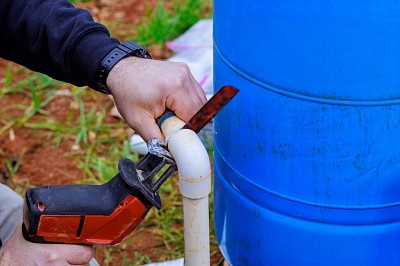Discover the importance of well water inspection for your home. Our expert services guarantee safe drinking water through detailed testing and analysis.
Well Water Inspection: Ensure Safe Drinking Water Quality
Well water inspection is vital to guarantee safe and clean drinking water. Many homes rely on well water for daily use. Regular well water inspection ensures the water remains free from contaminants. This is crucial for the health of your family. If you own a well, you need to understand its importance. Regular testing and maintenance keep the water quality intact. In this article, we will explore various aspects of well water inspection. This includes why it's important, what to look for, and how to conduct an inspection. Let's dive in and learn more about keeping your well water safe. Why is Well Water Inspection Important? Well water inspection is essential for several reasons. First, it ensures the water is safe to drink. Contaminated water can cause serious health issues. Regular inspections help detect harmful substances like bacteria and chemicals. Second, it maintains the overall quality of the water. Over time, wells can develop problems that affect water quality. Regular checks identify issues early, preventing bigger problems later. Third, well inspections help comply with local regulations. Many areas have specific guidelines for well water quality. Regular inspections ensure your well meets these standards. In summary, well water inspection protects your health and ensures high water quality. What to Look for During a Well Water Inspection During a well water inspection, several key areas need attention. Start by checking the physical condition of the well. Look for cracks or damage in the well casing. These can allow contaminants to enter the water supply. Next, inspect the well cap. It should be secure and free from damage. A damaged cap can let debris and pests into the well. Also, check the area around the well. Ensure there are no sources of pollution nearby. This includes septic systems, livestock, and chemical storage. Finally, test the water itself. This involves checking for bacteria, nitrates, and other contaminants. Each of these steps is crucial to ensure safe and clean well water. How to Conduct a Well Water Inspection Conducting a well water inspection involves several steps. First, gather the necessary tools. You'll need a flashlight, gloves, and a sample bottle. Start by inspecting the wellhead. Check for any visible damage or signs of contamination. Next, take a water sample. Follow the instructions carefully to avoid contamination. Send the sample to a certified lab for testing. They will analyze it for various contaminants. Review the test results carefully. If any problems are found, take action immediately. This may involve cleaning the well or installing a filtration system. Regular inspections are key to maintaining safe and clean well water. Common Contaminants Found in Well Water Several common contaminants can be found in well water. Bacteria are one of the most common. They can cause serious health problems if ingested. Nitrates are another common contaminant. They often come from agricultural runoff and can be harmful, especially to infants. Chemicals like pesticides and herbicides can also contaminate well water. These often come from nearby farms or gardens. Heavy metals like lead and arsenic can also be present. These can cause long-term health issues. Regular well water inspections help detect these contaminants early. This ensures your water remains safe to drink. Maintaining Your Well for Safe Water Proper maintenance is key to ensuring safe well water. Start by keeping the area around the well clean. Remove any debris or vegetation that could cause contamination. Regularly inspect the wellhead for damage. Fix any issues immediately to prevent contamination. Schedule regular water testing. This helps detect any problems early. Consider installing a water filtration system. This can remove many common contaminants. Finally, educate your family about well water safety. Teach them how to avoid contaminating the water supply. Proper maintenance and education are key to ensuring safe and clean well water. Conclusion Well water inspection is crucial for ensuring safe and clean drinking water. Regular inspections help detect contaminants early. This prevents serious health issues. By following the steps outlined in this article, you can maintain high water quality. Remember to regularly inspect your well, test the water, and perform necessary maintenance. This will ensure your family always has access to safe and clean drinking water. Well water inspection is an investment in your family's health. Make it a priority, and enjoy the peace of mind that comes with knowing your water is safe.

